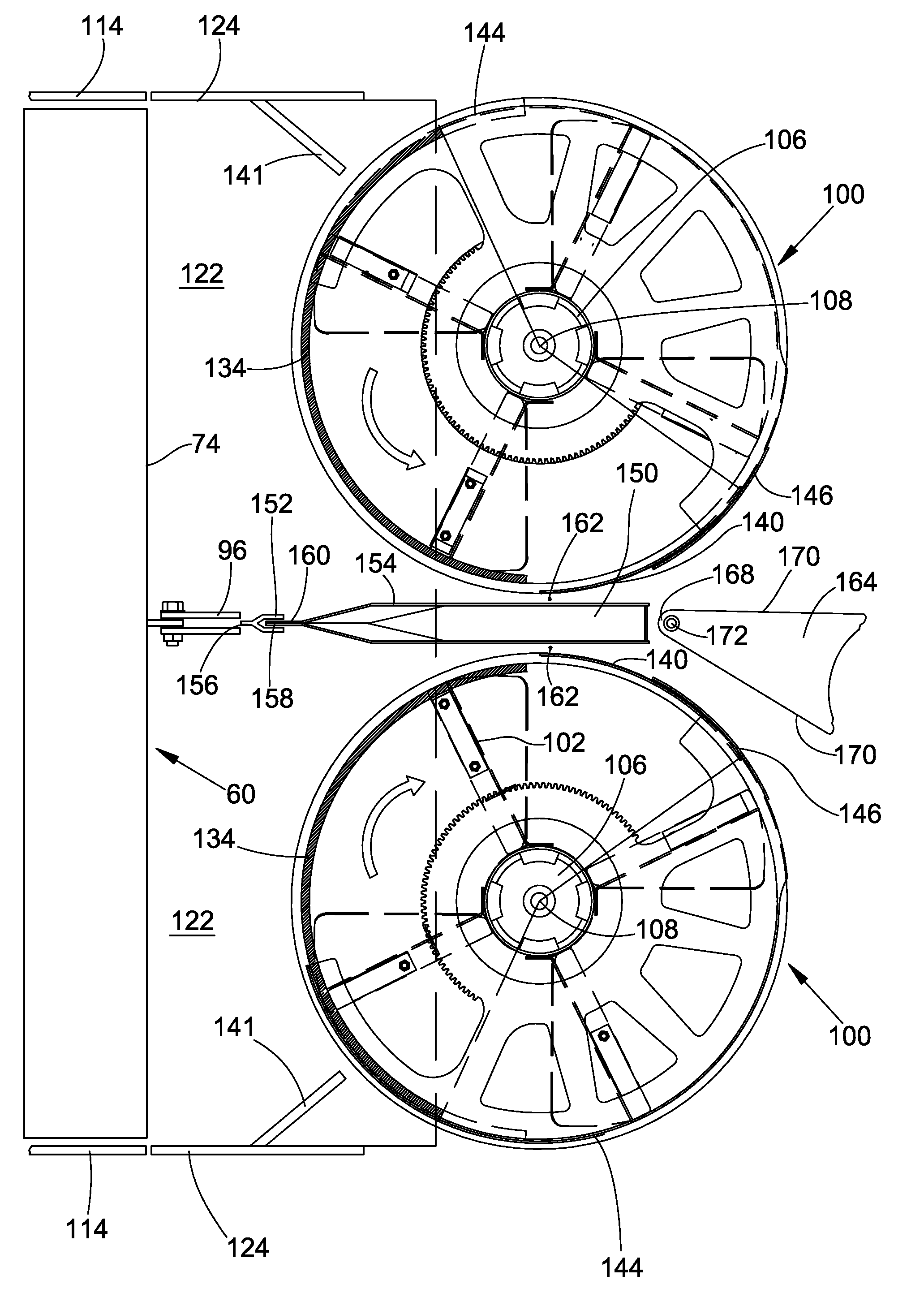Crop residue chopping and distributing arrangement for a combine harvester
a combine harvester and chopping technology, applied in the direction of mowers, agriculture tools and machines, agriculture, etc., can solve the problems of energy loss and quite energy-consuming deflection, and achieve the effect of increasing the discharging distance and improving the energy balance of the discharge blower
- Summary
- Abstract
- Description
- Claims
- Application Information
AI Technical Summary
Benefits of technology
Problems solved by technology
Method used
Image
Examples
Embodiment Construction
[0027]In this document, “front”, “forward”, “in front of”, and similar terms refer to the direction of movement of the vehicle when it travels through the field in a straight line harvesting crop. “Rear”, “rearward”, “behind”, and similar terms refer to the opposite direction. “Lateral”, “laterally”, and similar terms refer to a direction that is perpendicular to the above direction of movement and is generally horizontal.
[0028]FIG. 1 shows an agricultural combine harvester 10 with an undercarriage 12 with wheels 14 that are in contact with the ground, wherein said wheels are fixed on the undercarriage 12 and serve for propelling the combine harvester 10 in a forward direction that extends toward the left in FIG. 1. The operation of the combine harvester 10 is controlled from the operator's cabin 16. A cutting unit 18 is used for harvesting the grain-bearing crop and feeding the harvested crop to a slope conveyor 20. The harvested crop is fed to a guide drum 22 by the slope conveyor...
PUM
 Login to View More
Login to View More Abstract
Description
Claims
Application Information
 Login to View More
Login to View More - R&D
- Intellectual Property
- Life Sciences
- Materials
- Tech Scout
- Unparalleled Data Quality
- Higher Quality Content
- 60% Fewer Hallucinations
Browse by: Latest US Patents, China's latest patents, Technical Efficacy Thesaurus, Application Domain, Technology Topic, Popular Technical Reports.
© 2025 PatSnap. All rights reserved.Legal|Privacy policy|Modern Slavery Act Transparency Statement|Sitemap|About US| Contact US: help@patsnap.com



